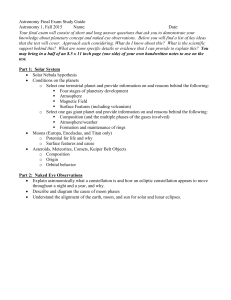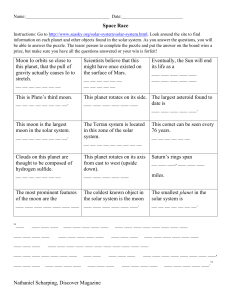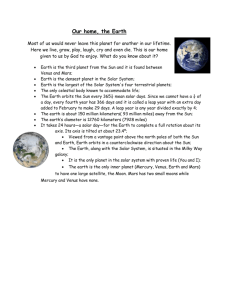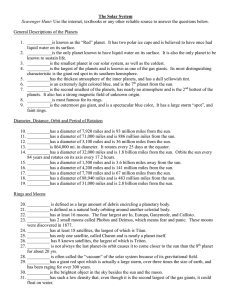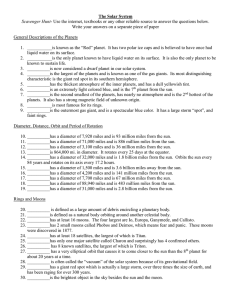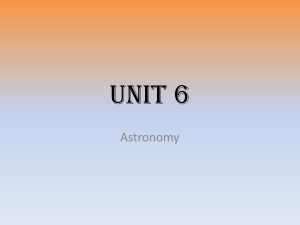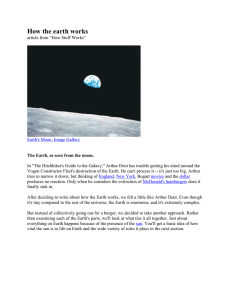Earth Fun Facts Astronomy Name: Date: life gases third nitrogen
advertisement
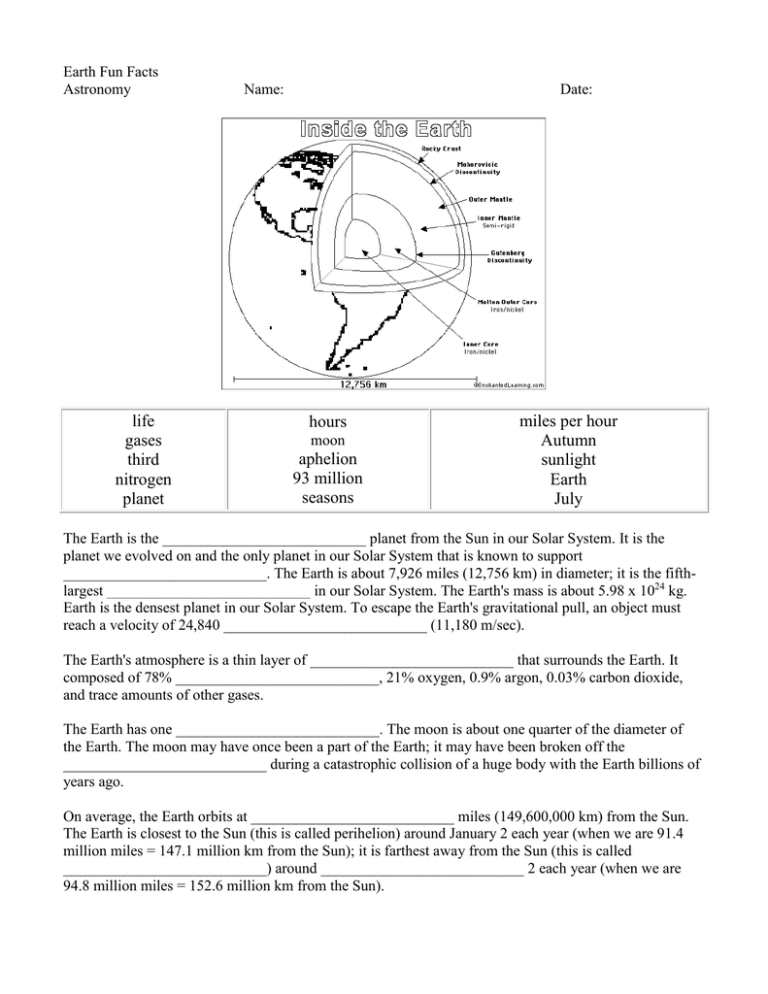
Earth Fun Facts Astronomy life gases third nitrogen planet Name: Date: hours moon aphelion 93 million seasons miles per hour Autumn sunlight Earth July The Earth is the ___________________________ planet from the Sun in our Solar System. It is the planet we evolved on and the only planet in our Solar System that is known to support ___________________________. The Earth is about 7,926 miles (12,756 km) in diameter; it is the fifthlargest ___________________________ in our Solar System. The Earth's mass is about 5.98 x 1024 kg. Earth is the densest planet in our Solar System. To escape the Earth's gravitational pull, an object must reach a velocity of 24,840 ___________________________ (11,180 m/sec). The Earth's atmosphere is a thin layer of ___________________________ that surrounds the Earth. It composed of 78% ___________________________, 21% oxygen, 0.9% argon, 0.03% carbon dioxide, and trace amounts of other gases. The Earth has one ___________________________. The moon is about one quarter of the diameter of the Earth. The moon may have once been a part of the Earth; it may have been broken off the ___________________________ during a catastrophic collision of a huge body with the Earth billions of years ago. On average, the Earth orbits at ___________________________ miles (149,600,000 km) from the Sun. The Earth is closest to the Sun (this is called perihelion) around January 2 each year (when we are 91.4 million miles = 147.1 million km from the Sun); it is farthest away from the Sun (this is called ___________________________) around ___________________________ 2 each year (when we are 94.8 million miles = 152.6 million km from the Sun). Each day on Earth takes 23.93 ___________________________. Each year on Earth takes 365.26 Earth days (that is, it takes the Earth 365.26 days to orbit the Sun once). The Earth's rotation is slowing down very slightly over time, about one second every 10 years. The Earth's axis is tilted from perpendicular to the plane of the ecliptic by 23.45°. This tilting is what gives us the four ___________________________ of the year: Summer, Spring, Winter and ___________________________. Since the axis is tilted, different parts of the globe are oriented towards the Sun at different times of the year; this affects the amount of ___________________________ each receives. Use your knowledge of Earth to answer the following questions. 1. How long does it take the Earth to revolve around the Sun? ____________________ 2. How far is the Earth from the Sun?_______________________ 3. Is the Earth's orbit around the Sun highly elliptical or almost circular?_______________________ 4. The Earth is the densest planet in the Solar System. Is it denser or less dense than water?_______________________ 5. It the Earth's rotation slowing down or speeding up slightly over time? _____________________ 6. What is the core of the Earth made of? _______________________ 7. What is the major component of the Earth's atmosphere? ______________________ 8. What is the name of the lowest layer of the Earth's atmosphere? This is the layer in which weather occurs. _______________________ 9. Are the seasons on Earth caused by the tilt of the Earth's axis or the fact that the Earth's distance from the Sun varies throughout the year? ______________________ 10. Is the Earth double, four times, or eight times larger (in diameter) than the Moon? ______________________


